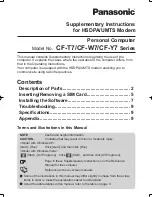
9
The fabric screen needs to be slowly unrolled from the cardboard drum
onto the ground, front facing down. If your screen is Reference Studio
4K, the front of the fabric is white and the back is black. If your screen is
AudioWeave, the side with denser weave pattern is the front.
3a.
You need to be make sure the floor cloth that was rolled together with the
fabric, is underneath the fabric on the ground. The floor cloth will protect
the fabric screen against dirt or damage from the ground. Unroll the fabric
screen slowly from the cardboard drum onto the ground. The front of the
fabric should be facing the ground, and the back facing upwards.
ASSEMBLY
Screen Fabric
The following steps will outline how to unroll the screen material and
mount it onto the frame assembled in the previous steps.
Make sure the ground is clear of any sharp obstacles and make sure there
is a floor cloth covering the ground. Do not remove the floor cloth until
the assembly is completed. The floor cloth will protect the fabric screen
against dirt or other particles from the ground. The setup is shown below.
Floor Cloth
Fabric Screen
(Facing Down)
Wear protective gloves to prevent scratches or other damage to
fabric. Make sure the ground is free of sharp objects and do not
put any tools or other objects onto the fabric.
3b.
4a)
4b)
Gather the plastic rods and sort according to length. The plastic rods will
be inserted into the sleeves on the outermost part of the fabric.
The rods have red rubber caps on each end to protect them from
damaging the fabric; do not take those caps off.
Insert the plastic rods into the four sides of the fabric. Make sure you are
using the correctly sized rod for the correct position as the rods should be
covering the whole sleeve of the fabric.
The four plastic rods of the same length make up the two horizon-
tal sides and the two rods of the same length make up the vertical
side of the fabric.
10
ASSEMBLY

































